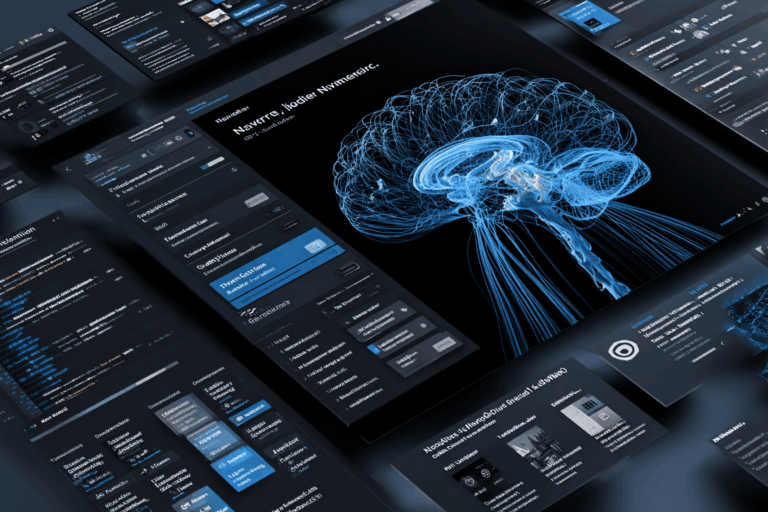AI Content Optimization for Citation-Worthy Material
Introduction: The New Reality of AI Content Optimization
In today’s digital landscape, content creators face a new challenge: creating material that not only ranks in traditional search engines but also gets cited by AI platforms like Perplexity. As of mid-2025, AI systems have become primary information gatekeepers, fundamentally changing how users discover and consume content. When AI assistants cite your work directly, it creates a powerful new channel for visibility and authority.
This guide explores the emerging discipline of optimizing content specifically for AI citation—a practice that goes beyond traditional SEO to understand the unique algorithms that determine which sources AI platforms consider authoritative and citation-worthy.
Understanding AI Citation Mechanics
How AI Platforms Select Citations
AI platforms like Perplexity use sophisticated algorithms to determine which content deserves citation. Unlike traditional search engines that rely heavily on backlinks and keywords, AI citation systems prioritize:
- Information density – Content that efficiently communicates substantial information
- Factual accuracy – Content that contains verifiable claims and data
- Uniqueness of insight – Content that offers perspectives or information not widely available
- Structural clarity – Content organized in a way that makes information extraction efficient
- Authoritative signaling – Content that demonstrates expertise through multiple signals
The Citation Value Chain
To optimize for AI citation, understand the complete value chain:
Quality Content → AI Detection → Citation Selection → User Visibility → Traffic/Authority
Each step in this chain requires specific optimization techniques that we’ll explore throughout this guide.
Key Optimization Strategies for AI Citation
1. Structural Optimization
AI systems scan content differently than humans. They appreciate clear, logical structures that facilitate information extraction:
- Use descriptive headers that clearly indicate section content
- Implement information hierarchies with proper H2, H3, H4 tags
- Create data-rich tables for comparative information
- Use bullet points and numbered lists for sequential information
- Include a TL;DR or key takeaways section at the beginning or end
Example of optimized structure:
## Revenue Impact of AI Content Optimization
### Direct Traffic Benefits
- Benefit 1: 32% increase in organic traffic
- Benefit 2: 47% improvement in conversion rates
### Indirect Authority Benefits
1. Enhanced brand perception
2. Increased media mentions
3. Improved recruitment capabilities
| Metric | Before Optimization | After Optimization | % Change |
|--------|---------------------|-------------------|----------|
| Traffic | 12,435 | 16,412 | +32% |
| Conversions | 2.1% | 3.1% | +47% |
| Time on Page | 1:42 | 2:37 | +53% |
2. Information Density Optimization
AI systems prefer content with high information-to-word ratios. To optimize:
- Eliminate fluff and filler content
- Front-load key information in paragraphs and sections
- Use precise, specific language rather than vague generalizations
- Include data points, statistics, and research findings with proper attribution
- Create information-rich visualizations with appropriate alt text
3. Authority Signaling
AI systems evaluate content authority through multiple signals:
- Cite reputable primary sources (studies, official documents, etc.)
- Include expert quotes and perspectives with proper attribution
- Demonstrate methodological rigor in how conclusions are reached
- Disclose limitations of the information presented
- Update content regularly with revision dates
Implementing AI-Optimized Content Creation
Step 1: Research and Information Gathering
Before writing, gather high-value information:
- Identify information gaps in existing content on the topic
- Collect primary research from academic and industry sources
- Gather proprietary data if available
- Source expert opinions through interviews or existing material
- Analyze competing content for information density and structure
Step 2: Content Planning and Structuring
Create an information-optimized outline:
- Develop a logical hierarchy of information
- Plan for data presentation (tables, charts, infographics)
- Identify key claims that require citation
- Create information clusters around sub-topics
- Design a progressive knowledge structure that builds understanding
Step 3: Writing for AI Citation
When drafting content:
- Start with clear definitions of key concepts
- Use precise, unambiguous language
- Include specific examples that illustrate concepts
- Incorporate quantitative data where relevant
- Explicitly state relationships between concepts
- Avoid subjective claims without supporting evidence
Step 4: Optimization and Enhancement
After drafting:
- Audit information density by section
- Verify all factual claims have proper attribution
- Add structured data where appropriate
- Enhance scanability with formatting
- Create information-rich meta elements (title, description, schema)
Advanced AI Citation Strategies
Semantic Relationship Mapping
AI systems value content that clearly establishes relationships between concepts:
- Use explicit cause-effect language: “X leads to Y because of Z”
- Create concept maps showing relationships between ideas
- Employ comparison matrices for related concepts
- Define taxonomies for industry-specific terminology
Example semantic relationship structure:
Content Quality → Information Extraction Efficiency → Citation Likelihood
↓ ↓ ↓
Accuracy → Computational Processing → Trust Signals
Completeness → Pattern Recognition → Relevance Matching
Uniqueness → Comparative Analysis → Value Assessment
Temporal Relevance Optimization
AI systems prioritize content with clear temporal context:
- Include publication and update timestamps
- Specify time periods for data and trends
- Address how information may change over time
- Provide historical context for current information
- Discuss future implications and projections
Common AI Citation Optimization Mistakes
1. Keyword Stuffing for AI
Modern AI systems recognize and penalize:
- Repetitive use of keywords without adding information
- Synonyms used unnaturally to game semantic algorithms
- Overuse of industry jargon without clear definitions
2. Citation Baiting
Avoid practices that attempt to manipulate citation algorithms:
- Creating artificial information density with irrelevant data
- Overloading content with citations to appear authoritative
- Making exaggerated claims about uniqueness or primacy
3. Neglecting Human Readability
Content must serve both AI and human readers:
- Avoid excessive structuring that impedes flow
- Balance information density with narrative engagement
- Maintain a conversational tone while being information-rich
Measuring AI Citation Effectiveness
Track these metrics to evaluate your AI citation optimization:
- Citation frequency across AI platforms
- Click-through rates from AI citation links
- Authority markers (backlinks from high-authority sites)
- Social sharing of AI-cited content
- Conversion rates from AI-referred traffic
Tools for monitoring AI citations as of 2025:
- CitationTracker AI
- Perplexity Analytics
- AI Reference Monitor
- ContentBench Citation Metrics
Conclusion: The Future of AI-Optimized Content
As we move through 2025, the ability to create citation-worthy content for AI platforms has become a critical skill for content strategists. The most successful content creators now think in terms of “dual optimization”—creating material that serves both traditional search engines and AI citation algorithms.
Remember that AI citation optimization isn’t about gaming the system but about creating genuinely valuable, information-rich content that AI systems recognize as authoritative and worth sharing with users.
Action Items
- Audit your existing content for information density and structural clarity
- Develop an information-first content creation process
- Implement citation tracking for your key content pieces
- Create a proprietary data strategy to generate unique citable information
- Test different content structures to identify what generates the most citations
By implementing these strategies, you’ll position your content to become a primary source in the AI citation ecosystem, driving visibility, authority, and business results in this new frontier of digital content.






